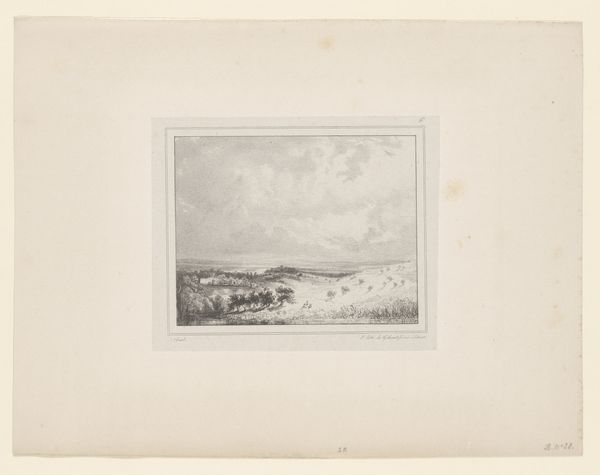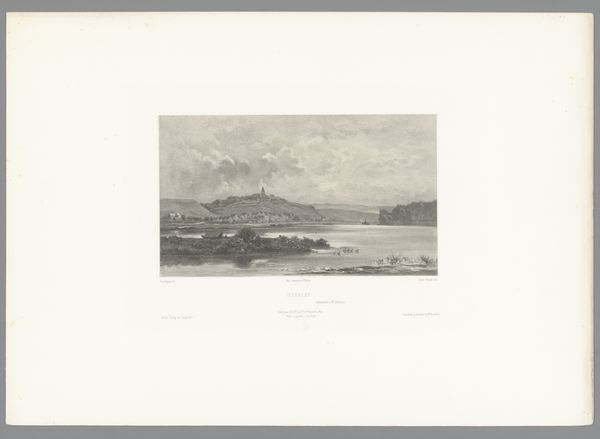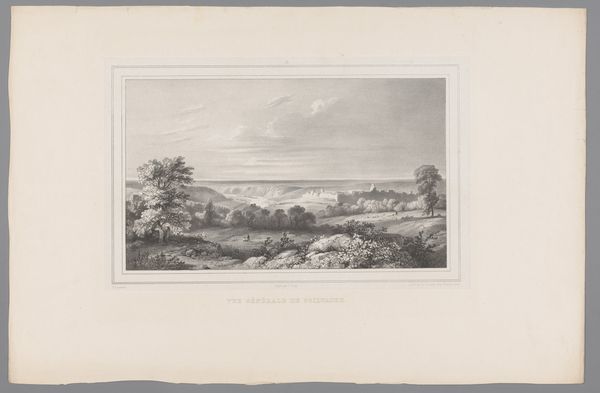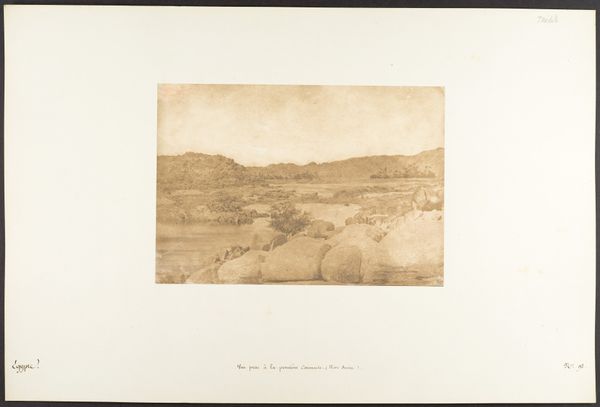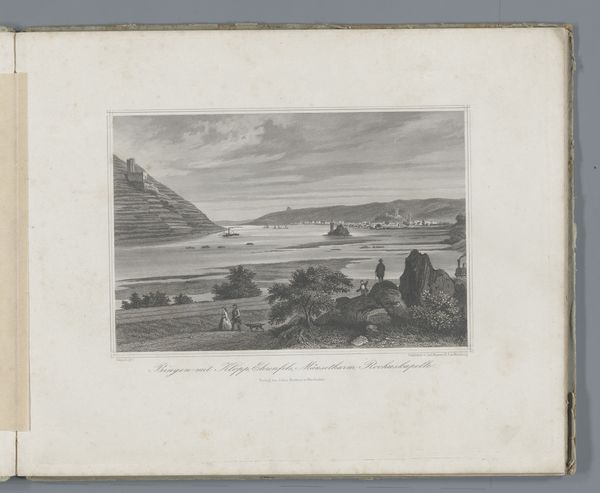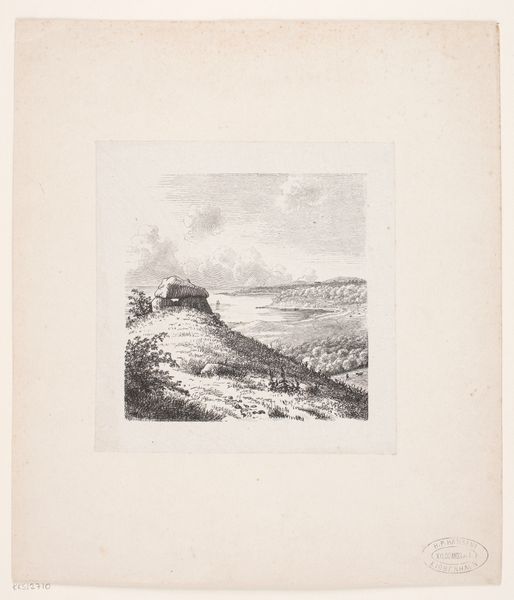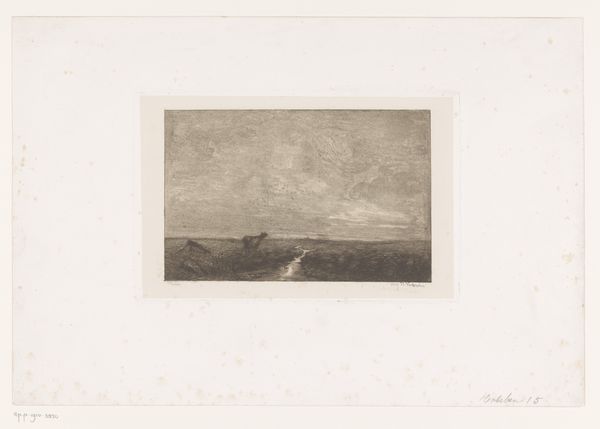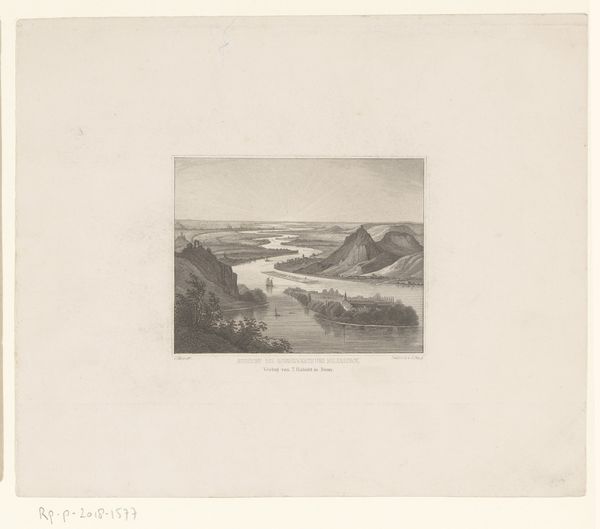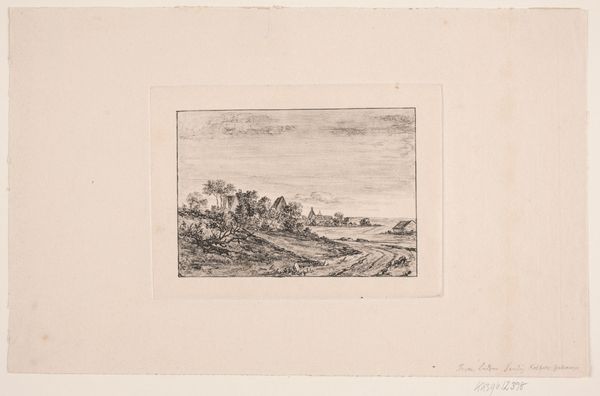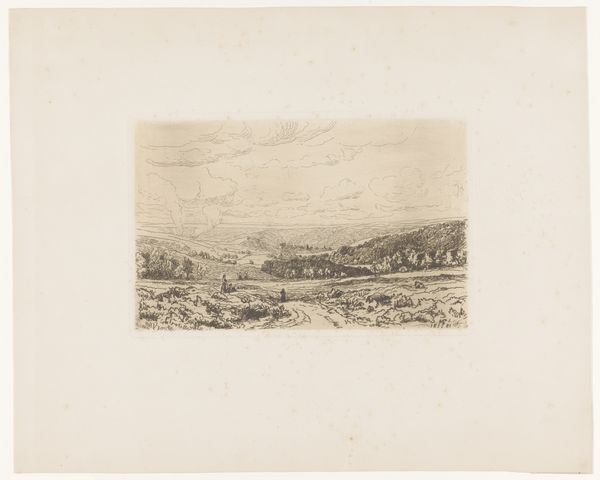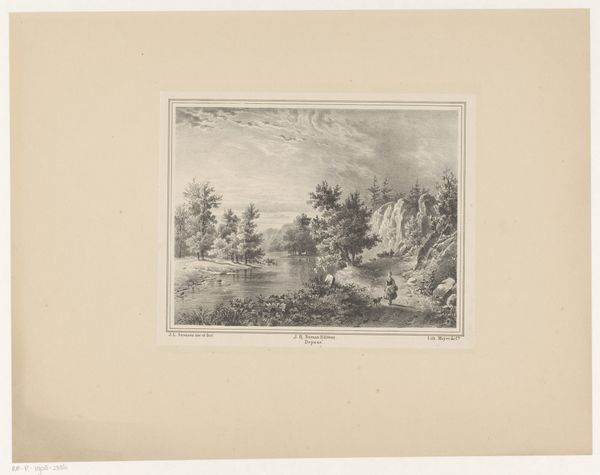
Dimensions: height 358 mm, width 540 mm
Copyright: Rijks Museum: Open Domain
Editor: We’re looking at “View of the village Beek in Gelderland,” a drawing made in 1856 by Gerardus Johannes Bos. It appears to be a mix of pencil and watercolour. I find the detailed rendering of the landscape quite captivating. What strikes you about this piece? Curator: Well, what interests me is its place within the development of landscape art in the Netherlands. In the mid-19th century, there was increasing emphasis on realism and a direct engagement with the local environment. Before this, landscapes often idealized the countryside. What is visible in the mid-ground - the relationship between town and open land? Editor: Yes, the buildings cluster, as if in need of protection from a wide openness. I wonder, was this view meant to reinforce Dutch pride, an assertion of ownership? Curator: Precisely. Works like this served a vital public role. Remember that the Netherlands had only recently become fully independent. Images like these affirmed national identity by showcasing the beauty and tranquility of the Dutch countryside. It's less about topographical accuracy and more about cultivating an emotional connection. What are your thoughts about where this would have been viewed at the time? Editor: Perhaps displayed in civic buildings, lending an air of established pride to government functions? Or even mass-produced as prints, disseminated widely? Curator: Exactly. It reminds us that art isn't just about individual expression, it's intertwined with political and social narratives, shaping how we see ourselves and our place in the world. This image speaks to a nation finding its feet. Editor: This definitely sheds new light on a seemingly simple landscape drawing! I am starting to consider the social role of art in the nineteenth century more clearly. Curator: Excellent.
Comments
No comments
Be the first to comment and join the conversation on the ultimate creative platform.
